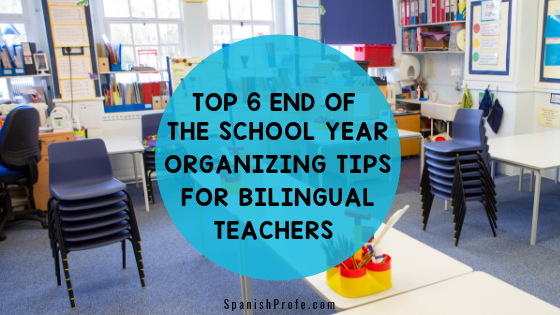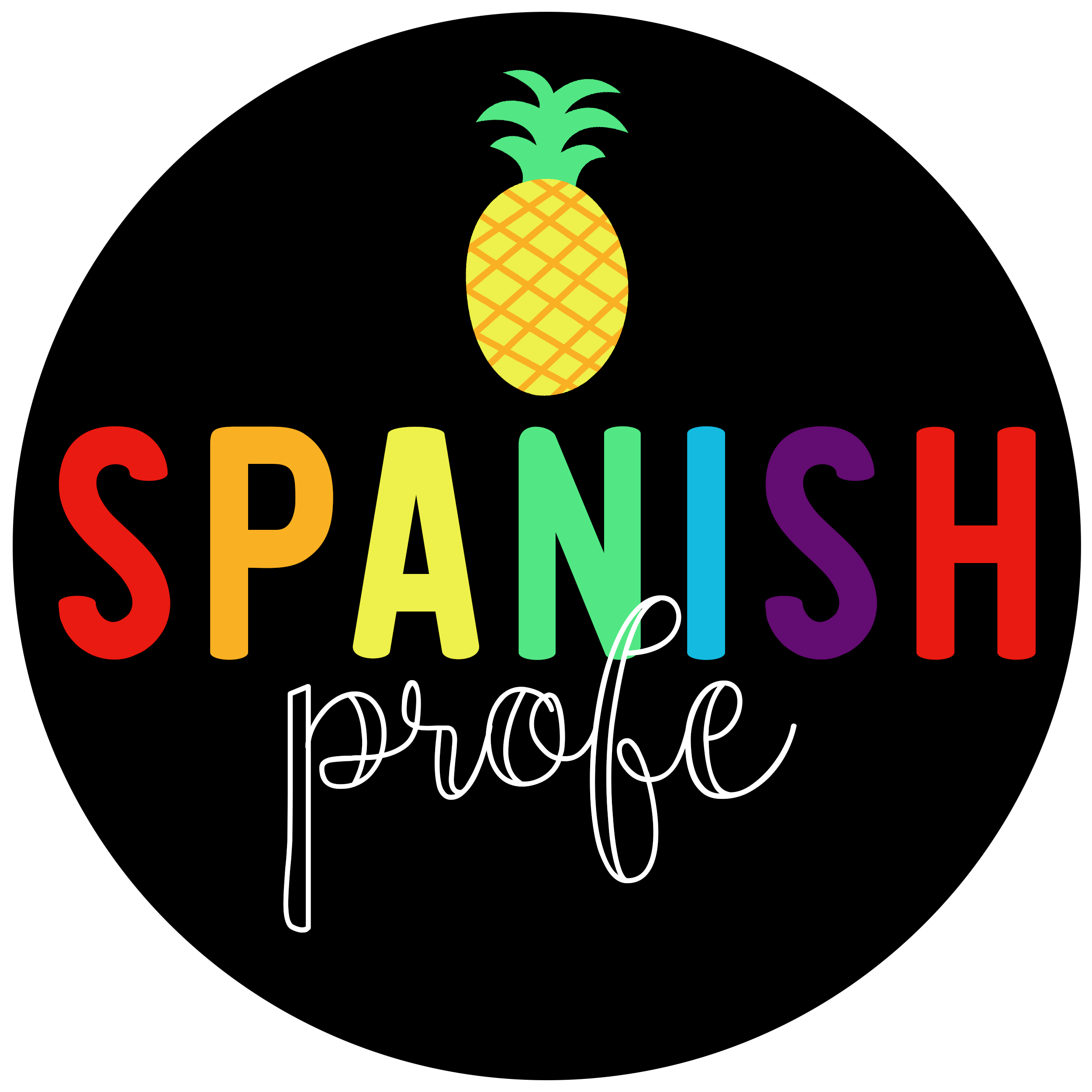
Has the end of the school year crept up on you? Is your classroom still a mess and you’re not ready for the summer? Are you unsure how you’re going to get everything cleaned up, organized and put away in the next couple of days? You’re not alone my friend.
Below are six tips that we have compiled to help you organize your bilingual classroom before the end of the school year.
Tip #1: Start Early
If you can, try to start organizing and thinking about what you need to do about a month before school ends. Make a to-do list or a list of things that you need to pack away, clean up or do. There are often things in your classroom that you’re not using and you can start putting those away in the closet, boxes or in the storage area before the end of the school year. Plan ahead and don’t leave everything until school it out.
Tip #2: Get Your Students to Help
Those 20 or 25 helpers that you have in your class are great for helping organize and putting away just about anything at the end of the year. Don’t do it all yourself. That’s ridiculous. Students can easily learn how to organize, sort through things and do a variety of tasks; all supervised by you.
In my classroom, I usually have students work in pairs or groups of three to do a certain task. Now, this doesn’t mean that they’re not doing academic work, but often in the last couple of weeks of school we would do our writing work or math and then as a second activity, those who finish quickly could help me organize or put away something. I have students sort books in the library. I have them go through math manipulatives. I have them organize markers, crayons and glue. I have them sort through some papers or pass back papers to students. There is such a wide variety of things… anything and everything that I think that a lower elementary bilingual student would be able to go through without too much supervision as long as you give them simple and clear instructions. They LOVE to help.
With my students help, I’m able to put away things in the closet or in the storage area once they are done with each task. You can get is done a lot quicker than you would if you did it by yourself.
Tip #3: Clean and Purge
So as you’re going through things, throw away or recycle things. You don’t need to keep every single little paper. I usually try to go through things and think ‘I going to use this again I usually have ‘KEEP’ pile and then a recycled pile of papers. I am one of those teachers that has a huge backlog of papers, so I do usually have a lot of papers to go through.
I usually end up recycle most of the papers. I also send many papers home with students. Look around the classroom go area by area and make the call; 1: Keep/File Away 2. Recycle 3. Send home with students. Are there things in book boxes, mailboxes, desks, the bulletin boards, and any other area that has a lot of papers or workbooks that needs attention?
Tip #4: Label Everything
The easiest way for you to be organized in your classroom is to know where everything is. I like to label different boxes. I have math centers and literacy centers by month. I have those boxes labeled and all the things I need for those months are in those boxes. So, Next year when I need the October centers, I could just go to that box and open it.
I used to keep everything in Ziploc bags and though it kind of worked.. it got to be too many bags. Now I keep the ziplock bags in the boxes just cause the bags were a little bit too cluttered and messy for me. I like to keep everything in those plastic shoebox-size boxes. You can usually get them on Amazon or target for about a dollar or $1.25 apiece. Those are very helpful. I label those and then even within the classroom, like your math manipulatives, your library, each leveled books, different papers, everything you find is a great way to label it so that you can find it easier the next time you need it.
Tip #5: Organize Papers and Files
When I started teaching, people had filing cabinets. Now maybe you still have a filing cabinet– or maybe you have a virtual one on your Google Drive. I find that having a monthly binders works for me best or even a subject binder.
I have a writing binder and then I have all the writing papers I use throughout the year in that binder. The same goes for your online files. Your computer files, your Google drive, how is that organized? If it’s totally cluttered (like mine), maybe you don’t want to do it right before school gets out because you are burnt out. However, that would be a great job for you to work on over the summers, organizing your electronic files and a manner that suits you best to find them in the future. You could organize your files by either by month, by subject, by theme, whatever works best for you and then getting rid of those duplicates or things you don’t need.
Tip #6: Prep for the first week of school
Now, this might sound ridiculous but hear me out. If you prep for and make some copies of that, you know you’ll need on the back to school week, you’ll save yourself so much time. Why? When you come back to school in August, there’ll be a long line at the copier (or 100 PD meetings you have to attend) and you could have saved yourself time.
Now, if you already know a few of the sheets or worksheets or activities that you’re going to do and have them pre copied and in a box waiting for you when you come back. If you are staying in the same grade level, at your immersion or dual language school, I would definitely recommend making some copies now in May or June so that when you come back, you don’t have to wait in line and waste your time standing and waiting instead of doing something productive; you will have a lot of it ready.
I hope you found these tips for organizing your bilingual classroom at the end of the year helpful and you can use one or two of these ideas to help yourself keep organized and clean your classroom out at the end of the school year. If you have any other ideas about end of the school year organization, leave a comment and let us know.









